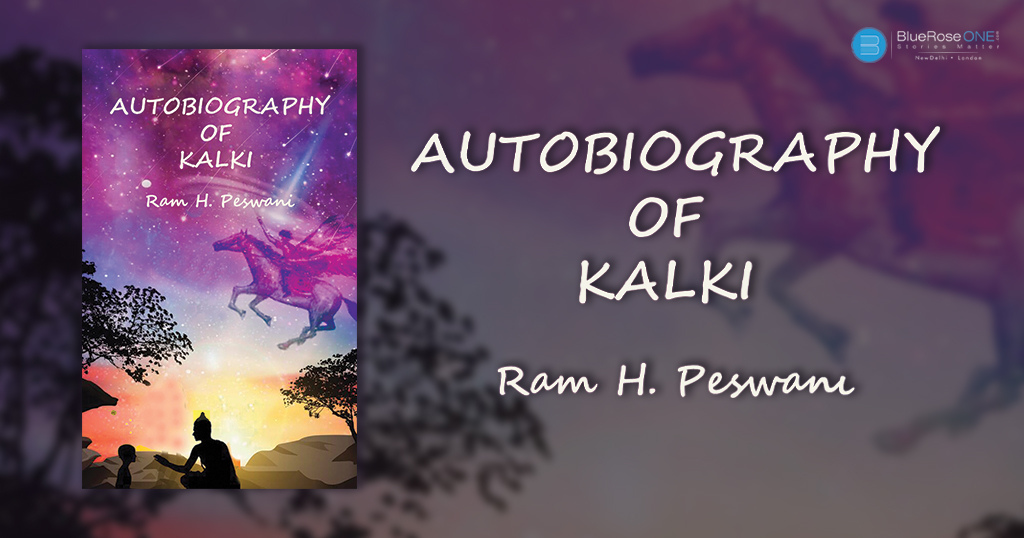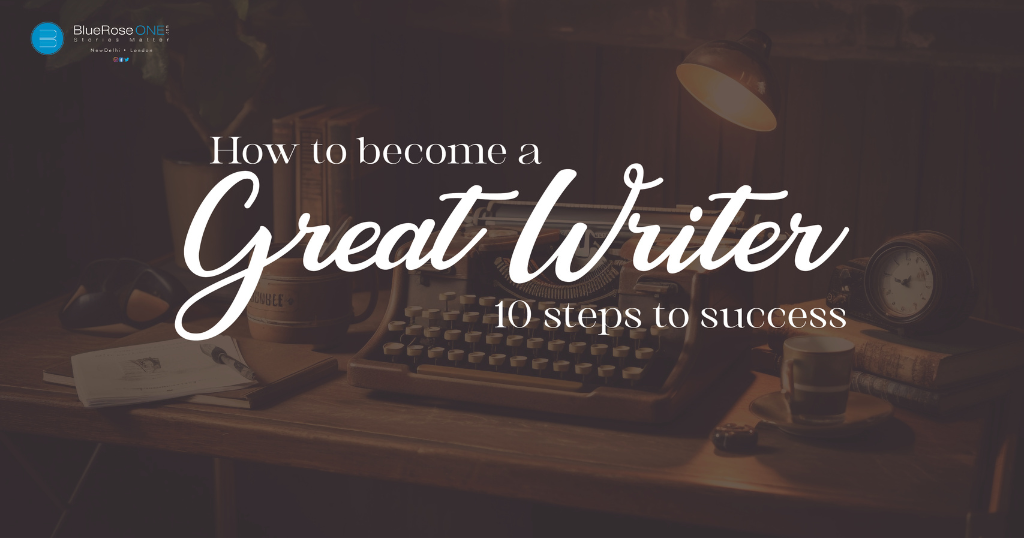
A complete guide on how to become a great writer
Do you aspire to be a great writer? Whether you want to create intriguing articles, tell riveting stories, or just develop your creative writing abilities, the path to becoming a proficient wordsmith is both gratifying and attainable. Writing is an art form that, like any other, demands devotion, practice, and a willingness to grow. Read: Easy Hacks to Inspire Yourself to Write a Book and Get it Published Easily. In this article, we’ll look at 10 crucial stages that will help you get started on the road to becoming a great writer. Read extensively Write regularly Define Your Purpose Study grammar and style Edit and revise Seek Feedback Read About Writing Set Goals Embrace Rejection and Failure Stay Inspired 1. Read extensively Reading is the cornerstone of becoming a great writer. It exposes you to a multitude of writing styles, genres, and voices. When you read extensively, you not only absorb the art of storytelling but also expand your vocabulary and comprehension abilities. Classic literature offers timeless lessons in narrative structure, while contemporary fiction showcases evolving writing techniques. Nonfiction broadens your knowledge and critical thinking. By immersing yourself in diverse reading materials, you develop a rich toolbox of literary devices and writing approaches that you can apply to your own work. 2. Write regularly Consistent writing practice is the path to improvement. Just as an athlete hones their skills through regular training, writers refine their craft by writing regularly. Dedicate specific time slots each day or week to writing exercises, journaling, short stories, or articles. This routine not only keeps your creative muscles active but also allows you to discover your unique writer’s voice. Remember that even the most celebrated authors started as novices? Embrace each writing session as an opportunity for growth and self-expression. 3. Define Your Purpose Writing without a clear purpose can lead to aimless, unfocused content. Before putting pen to paper or fingers to the keyboard, define your writing’s purpose. Consider whether you want to entertain, inform, persuade, or evoke emotions in your readers. Understanding your intent guides the direction of your writing and ensures that every word you choose serves a specific function. This clarity of purpose adds depth and resonance to your work, helping you connect with your target audience effectively. You may also like: Print on Demand vs Traditional puublishing: Which is right for you? 4. Study grammar and style Writing’s effectiveness relies heavily on a strong foundation of grammar and style. Good grammar ensures that your writing is clear, precise, and grammatically correct, preventing misunderstandings. Understanding sentence structure, punctuation, and proper usage of language elements is essential. Beyond grammar, explore various writing styles and voices to diversify your toolkit. Experiment with different approaches to conveying your message effectively. By studying grammar and experimenting with styles, you develop versatility and confidence in your writing, enabling you to adapt to various writing demands and engage your readers skillfully. 5. Edit and revise Writing is a dynamic process that extends beyond the initial draft. After putting your thoughts on paper, dedicate time to edit and revise your work. Begin by reviewing your writing for clarity, ensuring that your ideas flow logically and your message is comprehensible. Check for grammar, punctuation, and spelling errors, correcting them to maintain professionalism. Don’t hesitate to rewrite or restructure sentences or paragraphs if they hinder the effectiveness of your writing. The editing and revision phases polish your work, transforming it from a rough draft into a refined piece that resonates with your readers. 6. Seek Feedback Sharing your writing and seeking feedback is a crucial step in your growth as a writer. Connect with writing groups, workshops, or individuals who can provide constructive critiques of your work. The perspectives of others offer fresh insights, helping you identify blind spots and areas for improvement. Embrace feedback as a means to refine your writing skills and gain a deeper understanding of how your work is received. Constructive criticism enhances your ability to communicate effectively with your audience and allows your writing to evolve and mature. You may also like: How to Publish a Book? | Publish a Book | BlueRoseone 7. Read About Writing Enhancing your writing craft extends beyond practice; it involves continuous learning. Explore books, articles, and resources that delve into the art and techniques of writing. These resources cover a vast array of topics, from character development to plot structure, storytelling techniques, and much more. Learning from seasoned authors and writing experts provides invaluable guidance and can inspire fresh ideas and approaches. By immersing yourself in the wisdom of established writers, you gain new perspectives and tools to elevate your writing to new heights. 8. Set Goals Goals provide direction and motivation in your writing journey. Set clear and achievable objectives, whether it’s completing a novel, consistently publishing articles, or participating in writing competitions. Goals give you a sense of purpose and progress, breaking down your larger aspirations into manageable, actionable tasks. As you reach each milestone, you’ll experience a sense of accomplishment that fuels your enthusiasm and keeps you on track. By setting and pursuing your writing goals, you’ll develop discipline, focus, and a roadmap to navigate the intricacies of the writing process effectively. 9. Embrace Rejection and Failure Rejection is an inevitable companion on a writer’s journey. Whether it’s rejection letters from publishers, critiques from peers, or unfavourable reviews, it’s vital to understand that even the most celebrated authors faced setbacks and criticism early in their careers. Rejection is not a reflection of your worth as a writer but an opportunity for growth. Use it as a stepping stone to learning from feedback and refining your work. Resilience in the face of rejection is what distinguishes successful writers. Each rejection is a chance to improve and a reminder that persistence often leads to eventual acceptance and recognition. 10. Stay Inspired Writing thrives on inspiration, and the world is a boundless source of it. To cultivate your creativity, immerse yourself in experiences, explore new places, engage in meaningful conversations, and keenly observe human behavior. Great…
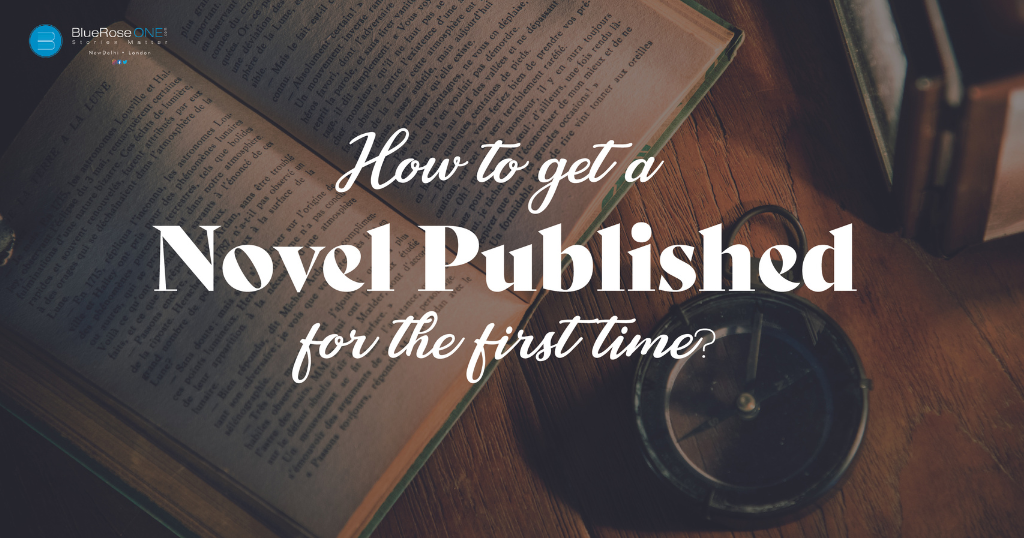
How to Get Your First Novel Published: Tips and Options
Getting your first novel published is a thrilling endeavour, but it can also be a challenging one. In this blog post, we will explore various methods for achieving your dream of becoming a published author. Whether you’re looking to publish your novel for free or are willing to invest some money, there are options available. We will also delve into the costs associated with publishing and provide tips for aspiring authors. Let’s embark on this literary journey together. Traditional Publishing vs. Self-Publishing The first decision to make when you want to publish your novel is whether to pursue traditional publishing or self-publishing. Each approach has its pros and cons. 1. Traditional Publishing: Traditional publishing involves submitting your manuscript to literary agents or publishers. Here are some steps to follow: 2. Self-Publishing: Self-publishing is a quicker and more accessible route, but it requires more self-promotion. Key steps include: You may also like: Unlocking success: Bluerose publisher’s best Amazon KDP books What is the Cost of Publishing a Novel? Publishing a novel, whether traditionally or independently, can be a costly endeavor. The expenses can vary significantly. Traditional publishing typically doesn’t require upfront fees, but it often involves giving up a portion of your royalties to the publisher. In contrast, self-publishing allows you to maintain creative control but comes with expenses such as editing, cover design, and formatting. For those seeking free publishing options, there are platforms like Wattpad and Medium where you can share your work online for free. While these platforms don’t cost money, they may not offer the same level of exposure as traditional publishing or self-publishing through reputable channels. How to Publish Your Novel for Free? If you’re determined to publish your novel for free, there are a few routes you can take: You may also like: Is kindle direct publishing right for your next book? What is the Minimum Cost to Publish a Book/Novel in 2023? If you’re open to investing a modest amount in publishing your novel, consider these essential expenses: Earnings from First Novels As you gather more books in your backlist, establish a fanbase, and engage in successful marketing tactics, your earning potential improves. Many self-published authors have seen their revenue grow steadily over time, sometimes reaching full-time author status. Publishing your first novel is a thrilling adventure full of possibilities. Whether you choose traditional publication or self-publishing, remember that perseverance, drive, and a well-crafted tale are essential. While free publication of your manuscript is a possibility, it may not deliver the visibility or cash you seek. Read: 15 Latest Marketing Trends to Promote Your Book in 2023. The decision to publish your work ultimately comes down to your goals, finances, and dedication to your art. If you stay committed to your writing, your goal of being a published author can come true. Publish your book with BlueRoseONE and become a bestselling author. Don’t let your dream of becoming an author fade away, grab the opportunity now and publish your book – be it fiction, non fiction, poetry or more.
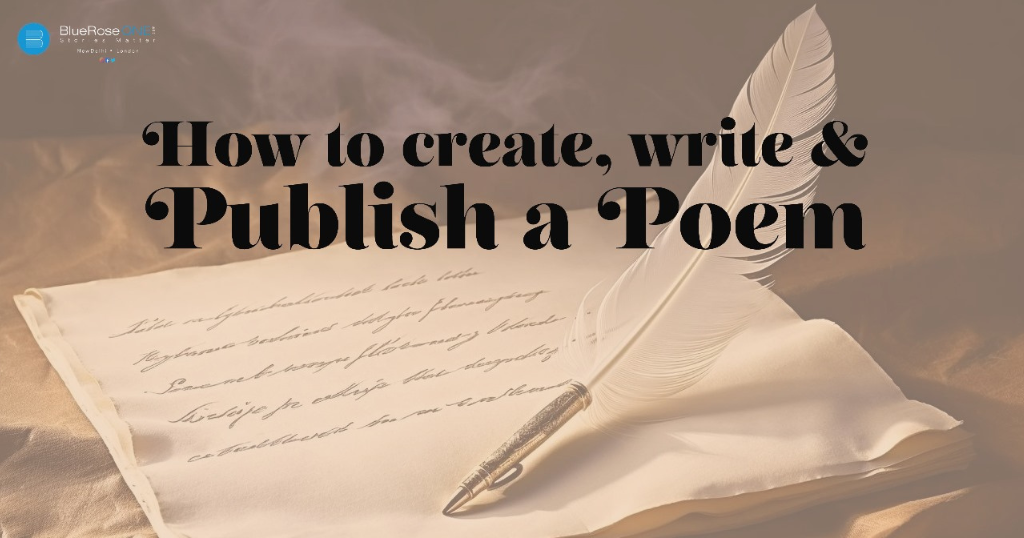
Learn How to Create, Write, and Publish a Poem
Poetry has a timeless charm due to its ability to capture emotions, conjure images, and express deep concepts with simple words. If you love poetry and want to share your rhymes with the world, this book will teach you how to design, compose, and publish your own poems. Read: How to Write and Create a Compelling Book Blurb We’ll take you through the interesting world of poetry, from writing poems to having your work published, in this blog. Can you publish a single poem? You certainly can! Individual poetry submissions are accepted by several print and online magazines. These sites enable young poets to present their work to a larger audience. Open requests for poetry contributions are common in literary publications, journals, and anthologies. To begin, polish your poetry till it shines, and then look for magazines that fit your style and topic. Create an engaging cover letter, follow the submission requirements, and submit your poem for consideration. You may also like: What Is Contemporary Fiction? Definition, Themes with Examples How Do I Publish My Own Poetry? Publishing your poetry can take several forms, depending on your goals and resources: You may also like: Literary Fiction vs. Genre Fiction: Definition & Examples How Much Does It Cost to Publish Poetry? The cost of publishing poetry varies depending on the publishing path you choose. Here’s a breakdown: You may also like: Top 10 Rhetorical Devices Every Writer Should Know How Do You Publish a Poem for Free? Publishing your poem for free is achievable through various online platforms and competitions. Here are some ways to get your poetry out there without spending: You may also like: What is Ghostwriting? A Complete Guide for Beginners How Do You Publish a Poem Online? Publishing poetry online is relatively straightforward. You may also like: 10 Magical Books That Combine Christmas and Fantasy How Do You Get a Poem Published? To increase your chances of getting a poem published, follow these steps: You may also like: How to Publish a Book? | Publish Your Book | BlueRoseOne How Do I Get a Poem Published? Getting a poem published often requires patience and persistence. Here’s a summarised approach: In conclusion, poetry offers a unique channel for self-expression, and publishing your poems allows you to share your creativity with the world. Whether you opt for traditional publishing, self-publishing, or sharing your work online, remember that persistence, dedication, and continuous improvement are key to success in the world of poetry. Read: How to pick between Paperback, Hardcover, Ebook – What’s best for you? Embrace the joy of writing and sharing your verses, for poetry has the power to touch hearts and souls in profound ways. Publish your book with BlueRoseONE and become a bestselling author. Don’t let your dream of becoming an author fade away, grab the opportunity now and publish your book – be it fiction, non fiction, poetry or more.
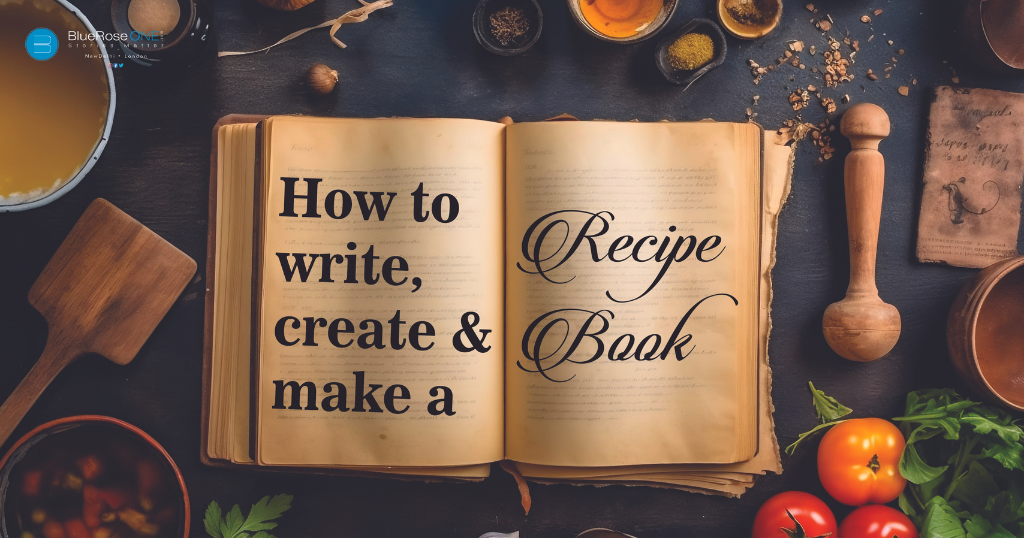
Learn how to write, create and make a recipe book
Do you have a passion for cooking and want to share your culinary creations with the world? Creating your own recipe book or cookbook is a fantastic way to do just that. Not only can you document your favourite recipes, but you can also craft a beautifully designed book to inspire others in the kitchen. Read: How to Write and Create a Compelling Book Blurb for Your Bestseller: Easy Hacks to Rely upon. In this comprehensive guide, we’ll take you through the steps of how to make your very own recipe book, answer common questions, and explore the exciting world of cookbook creation. How Do I Make My Own Cookbook? Creating your own cookbook might sound like a daunting task, but with careful planning and organisation, it can be an enjoyable and rewarding project. Here’s a step-by-step guide to help you get started: You may also like: Guide to Self Publishing on Amazon Kindle Direct Publishing How Do You Make a Recipe Book Step by Step? Now, let’s break down the process into more detailed steps: You may also like: 5 Act Structure: Definition, Examples and More How Do You Create a Recipe Book for Free? Creating a recipe book for free is possible with the right tools and resources. Here’s how: Do recipe books make money? Recipe books can be profitable, but success depends on various factors: Remember that cookbook publishing often involves upfront costs, so careful planning and marketing are essential to making a profit. Read: How to pick between Paperback, Hardcover, Ebook – What’s best for you? In conclusion, creating your own recipe book or cookbook is an exciting journey that allows you to share your love for cooking with others. By following these steps and considering your options, you can bring your culinary creations to life and even turn your passion into a profitable venture.
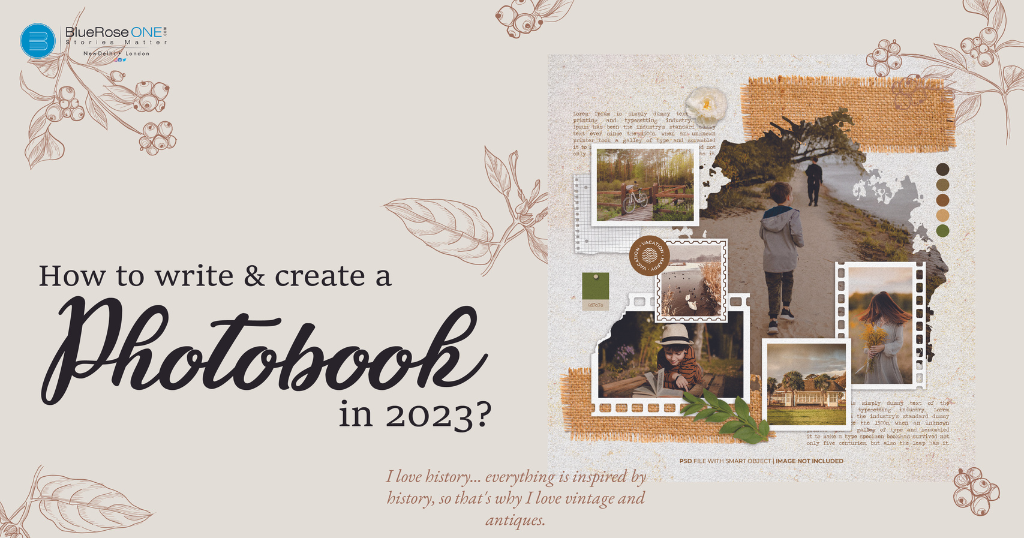
How to write and create a photobook in 2024
Photos have become an essential part of our lives in the digital era, documenting memories, experiences, and cherished moments. What better way to keep and share these memories than to make a beautiful photobook? This article will walk you through the process of producing a customised photobook in 2024, whether you’re a novice or trying to improve your photobook-making abilities. Read: How to Write an Engaging Introduction for Your Book: Tips and Examples We’ll cover everything you need to know to turn your digital and printed images into beautiful mementos, from choosing the best photos to designing layouts and adding text. How Do I Make a Photobook for Beginners? Creating a photobook is a creative and rewarding endeavour, even if you’re a beginner. Here are the essential steps to get you started: Can I Make My Own Picture Book? Absolutely! Making your own picture book is a creative project that allows you to tell a story or showcase your artwork and photography. Whether you’re a parent creating a children’s picture book, an artist displaying your portfolio, or someone wanting to share a collection of illustrations, you can follow a similar process to creating a photobook: How to Make a Book with Photos and Text Creating a book with photos and text combines storytelling and visual elements to convey your message effectively. Whether you’re crafting a family history book, a travel journal, or a cookbook, here’s how to do it: How to Make a Photo Book Online Creating a photo book online is a convenient and user-friendly option. Follow these steps to make your photo book: In 2024, making a picture book is a fantastic way to preserve memories, tell tales, and demonstrate your talent. Whether you’re a novice or an expert, the process requires careful planning, deliberate design, and attention to detail. Read: What is Typesetting: A Complete Guide to its Uses, Definition, and Importance You may create customised picture books that capture the spirit of your beloved memories and experiences by picking the correct photographs, combining them with complimentary text, and using internet platforms or DIY approaches. So grab your camera or go through your digital archives and start turning your photographs into lovely mementos.
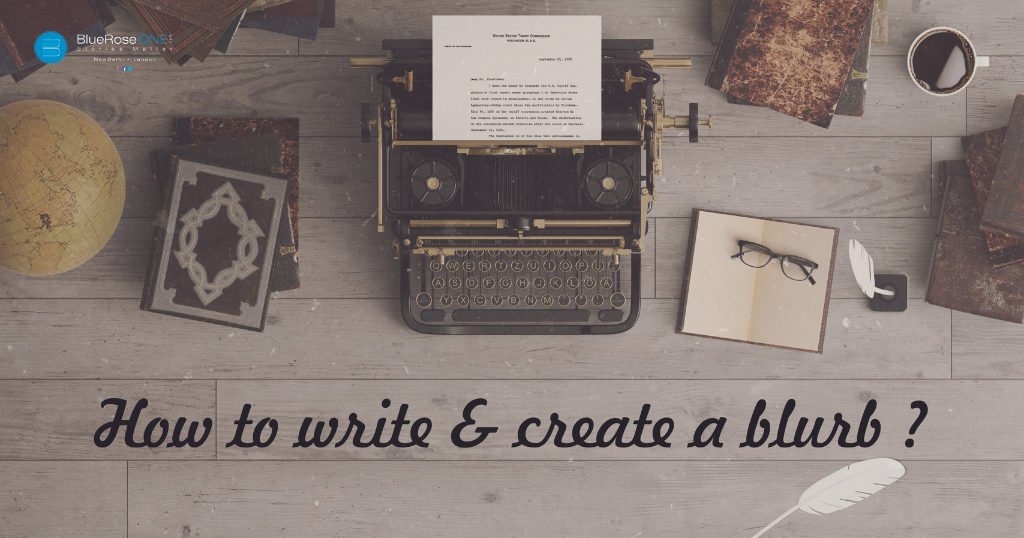
How to Write and Create a Compelling Book Blurb
The blurb for a book is similar to the teaser trailer for a movie, providing a tantalising insight into the world of the tale and compelling readers to read on. Writing a good blurb is an important talent for both authors and publishers. This blog will walk you through the process of creating an engaging book blurb, whether you’re a fledgling novelist, a self-published author, or just someone inquisitive about the art of blurb writing. We’ll define a book blurb, show samples, and offer practical advice on how to write an engaging blurb that entices people to read on. What is a book blurb? A book blurb is a quick, interesting overview of the content of a book that can be found on the back cover or inside flap of a physical book or on the product description page of an online listing. Its major goal is to capture the reader’s attention, pique their curiosity, and give them an idea of what to expect from the book. A well-written blurb delivers enough intrigue and information to pique the interest of potential readers without giving too much of the narrative away. It’s a marketing technique, a sales pitch, and a promise of the adventure or information contained within the pages. What is a Book Blurb Example? Here’s an example of a book blurb for a mystery novel: “In the dimly lit alleys of Victorian London, a brilliant detective races against time to solve a series of gruesome murders. But as the bodies pile up and the clock ticks down, the line between hunter and hunted blurs. In this gripping tale of suspense and intrigue, follow Detective James Winters on a chilling journey through the dark underbelly of the city, where secrets and shadows reign supreme. Can he unravel the mystery before the killer strikes again? Prepare for a riveting adventure that will keep you guessing until the final page.” You may also like: What is Typesetting? A Beginner’s Guide to Perfect Page Layouts How Do I Write a Blurb for My Book? Writing a compelling book blurb requires a mix of creativity and marketing savvy. Here’s a step-by-step guide to help you craft an enticing blurb: You may also like: What is Typesetting? A Beginner’s Guide to Perfect Page Layouts Who Writes the Blurb of a Book? Because the author is intimately familiar with their own work, they are usually in charge of drafting the first draught of the book blurb. In the conventional publishing sector, however, a professional editor, marketer, or publisher would often cooperate with the author on the blurb. Self-published writers can also hire a professional blurb writer or editor to guarantee that their blurb is as successful as possible. The ultimate objective is to write a blurb that successfully expresses the substance of the book while also engaging potential readers. How long does a blurb book take? The amount of time needed to create a book blurb varies based on factors such as the intricacy of the tale, the author’s experience with blurb writing, and the degree of information requested. In some circumstances, authors may spend only a few hours producing the perfect blurb, while in others, it may take many days or even weeks. It’s critical not to hurry the process because a well-written blurb is an important marketing tool for your book. Take the time necessary to ensure that it properly expresses the core of your work while also engaging your target audience. What Is the Difference Between a Book Description and a Blurb? A blurb and a book description serve similar functions but differ in context and length. A book description is a lengthy piece of promotional prose that is often featured on a book’s product page or in marketing materials. It gives a detailed description of the storyline, topics, and characters in the novel. A blurb, on the other hand, is a shorter, more condensed synopsis featured on the book’s cover or back cover, aiming to capture the reader’s attention immediately. While both are intended to lure readers, a blurb is more succinct and teaser-like, whilst a book description provides a more in-depth analysis of the book’s content. Why is a Blurb Important? A blurb is important for several compelling reasons: In conclusion, a blurb is a strong tool for attracting people, stimulating curiosity, and finally encouraging them to read your book. It is an important part of efficient book promotion and may have a big impact on the success of your literary work.
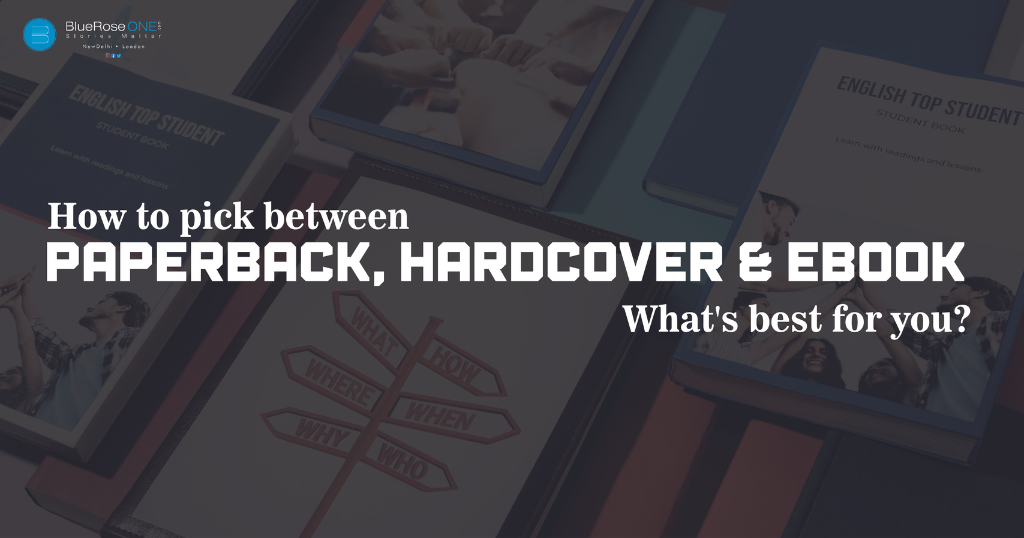
How to pick between Paperback, Hardcover, Ebook – What’s best for you?
When it comes to reading a decent book, one of the first choices you’ll have to make is the format. Should you choose a paperback for its classic appeal, a hardcover for its durability, or an ebook for its digital convenience? Each alternative has its own distinct advantages, and the best one is primarily determined by your particular tastes and reading patterns. In this blog article, we’ll look at the benefits and drawbacks of paperback, hardcover, and digital formats. We’ll also answer frequently asked topics like whether paperbacks and ebooks are the same and why ebooks are typically cheaper. By the end, you’ll have a better idea of which format is ideal for you. You may also like: Amazon Ads for Authors: A Step-by-Step Guide to Boosting Book Sales Paperback vs. Hardcover Paperback Books: For ardent readers, paperbacks are a classic choice. They are lightweight and portable, with flexible spines that allow for pleasant reading. Furthermore, they are often less expensive than hardcovers. Paperback books are ideal for readers that value mobility, affordability, and a comfortable reading experience. They are great for daily reading, whether commuting or relaxing at home. Hardcover Books: Hardcovers, on the other hand, exude sophistication and durability. They are well-made and look great on bookshelves. Hardcovers are less prone to wear and tear due to their sturdy cover and high-quality paper. They are frequently the favoured choice for collectors, people seeking unique editions, or when a book must survive for generations. While hardcovers tend to be more expensive, they offer a timeless appeal and a sense of permanence. Which is better: paperback or ebook? The choice between paperback and ebook ultimately depends on your reading preferences. Here are some key factors to consider: You may also like: How to Publish a Book? | Publish Your Book | BlueRoseOne Are paperbacks and e-books the same? No, paperbacks and ebooks are not the same. While both provide access to the same content, they offer distinct reading experiences. Paperbacks provide a tactile feel and the joy of flipping physical pages, while ebooks offer digital convenience with features like adjustable text size, in-book searching, and the ability to highlight text. Ebooks are also more portable, as you can carry an entire library on a single device. Additionally, ebooks often come with interactive features like hyperlinks and multimedia elements, adding a new dimension to the reading experience. Why is an ebook cheaper than a paperback? Ebooks are typically cheaper than paperbacks due to several factors. First, there are no printing, paper, or shipping costs associated with ebooks. Second, ebooks don’t require physical shelf space in bookstores or warehouses, reducing overhead expenses. Publishers can pass these cost savings on to consumers. Furthermore, ebooks are subject to lower or no sales taxes in many regions. However, it’s essential to consider the initial cost of an e-reader device, as it can affect the overall affordability of ebooks. You may also like: How Can I Get a Book Published? How to Compare and Contrast Ebooks and Textbooks? When comparing ebooks to printed books, consider the following: You may also read: List of Top 10 Famous Ravinder Singh Books of All Time Difference Between Ebook and Printed Book Aspect Ebooks Printed Books Format Digital files viewed on electronic devices Physical books made of paper and a cover Portability Extremely portable; entire library in one device Less portable; carry limited books at a time Adjustable Text Size Adjustable font size for customized reading Fixed font size determined by the book’s printing Searchability Easily searchable for specific content No built-in search function; use a physical index Tactile Experience No tactile sensation; screen interaction Offers a tactile experience with paper and pages Ownership Digital rights; limited sense of ownership Tangible ownership with a physical copy Cost Often cheaper, with free and discounted options Paperback usually more affordable than hardcovers Environmental Impact Generally eco-friendlier due to no paper production Involves paper production, contributing to waste Collectibility Limited collectibility value in digital form Potential collectible value for rare editions Shelf Space Requires no physical shelf space Requires shelf or storage space Availability Instant downloads with wide online availability Availability depends on local bookstores and stock Choosing between paperback, hardcover, and ebook formats is a matter of personal preference and reading habits. Consider factors like portability, cost, and the tactile experience you prefer. Whether you opt for the traditional charm of a printed book, the durability of a hardcover, or the digital convenience of an ebook, what matters most is the joy of reading and the stories you encounter along the way.
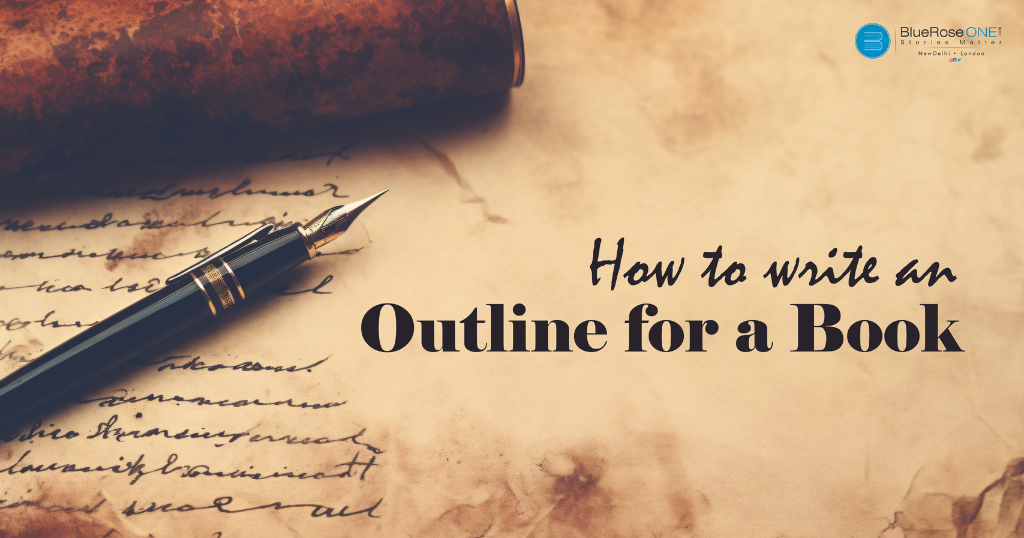
How to write an outline for a book?
Writing a book is a massive undertaking, but a well-structured outline may make the process much more manageable and enhance your chances of success. An outline acts as a road map, leading you through the complex trip of storytelling, keeping you on track, and ensuring your tale runs smoothly. In this article, we will look at how to create an excellent book outline. Whether you’re a first-time writer or a seasoned expert trying to expedite your approach, these tips will help you create a captivating and well-organized outline that will serve as the basis for your literary masterpiece. What is the Basic Outline Format? A basic book outline typically consists of three main components: the beginning, the middle, and the end. Each of these segments can be further divided into chapters, scenes, or key events, depending on your preference and the complexity of your story. Here’s a breakdown of the basic outline format: Beginning: This section introduces the main characters, setting, and the central conflict or problem. It sets the stage for the story and hooks the reader’s interest. Middle: The middle part of the outline includes the development of characters, the progression of the plot, and the unfolding of various events, conflicts, and subplots. It forms the bulk of your story. End: The conclusion outlines how the story resolves, tying up loose ends and providing closure for the reader. This basic structure provides a solid foundation for your book’s narrative arc. However, it’s essential to tailor your outline to your specific story and genre. What Are the 5 Steps to Writing an Outline? Creating a book outline can be broken down into five key steps: Brainstorm and Develop Ideas: Allow your ideas to flow freely throughout this early phase. Begin by outlining the key parts of your narrative, such as the place, characters, and main plot points. Think about the overall ideas and the message you want to send to your audience. This brainstorming approach allows you to explore many story possibilities and concepts, laying the groundwork for a distinctive and interesting tale. Arrange the three acts as follows: The three-act format is a timeless storytelling framework. Divide your tale into three acts: introduction, middle, and conclusion. The first act establishes the characters, scene, and principal conflict. The middle section expands on the storyline, characters, and subplots while increasing tension and conflict. The conclusion settles the core conflict, ties up loose ends, and brings closure. Identify pivotal moments and turning points within each act to create a cohesive and well-paced narrative. Make chapter or scene summaries as follows: Divide each act into smaller sections, such as chapters or scenes. Write concise descriptions of the important events, character development, and conflicts for each of these units. Include important facts to provide you with a clear path as you write. These summaries can help you keep focus and direction while ensuring your tale flows smoothly. Maintain your flexibility: Flexibility is essential during the creative process. Be open to fresh ideas and modifications as you go further into your tale when outlining. Writing is a dynamic adventure, and your characters may take you in unexpected ways at times. Accept these shocks and be ready to modify your plan if needed. Flexibility enables spontaneous narrative and can lead to richer, more authentic narratives. Review and Refine: After completing your initial outline, take the time to review it for coherence and flow. Ensure that the sequence of events makes sense and that the narrative maintains a logical progression. Make any necessary adjustments to refine the outline, fine-tuning the structure to ensure that your story flows smoothly. A well-structured outline serves as a solid foundation for your writing, making the entire process more efficient and enjoyable while helping you stay on track with your storytelling goals. How to Write an Outline for a Fiction Book: 1. Determine your genre and audience. Before you start outlining, identify the genre of your fiction book (e.g., romance, mystery, science fiction) and the target audience (e.g., young adults, fantasy enthusiasts). 2. Define your premise and central theme: Write a concise statement that encapsulates the core idea of your story and the central theme you want to explore. 3. Create a three-act structure: Act 1 (Beginning): Introduce the main character(s). Set the setting and time frame. Present the inciting incident or problem. Establish the story’s tone and mood. Act 2 (Middle): Develop the plot and characters. Introduce subplots and conflicts. Build tension and suspense. Include rising action and character growth. Act 3 (end): Resolve the central conflict. Tie up loose ends and subplots. Provide a satisfying conclusion. Leave room for an epilogue if necessary. 4. Break down each act into chapters or scenes: Divide each act into smaller segments, outlining the major events, character development, and plot twists in each. Be flexible with this structure as your story evolves during the writing process. 5. Develop character profiles: Create detailed descriptions of your main and supporting characters, including their backgrounds, motivations, and character arcs. 6. Incorporate key settings: Outline the locations or settings that play a significant role in your story, describing them in enough detail to immerse your readers. 7. Include important dialogue and key scenes: Identify critical conversations and pivotal scenes that move the plot forward or reveal essential character traits. 8. Outline character relationships: Highlight how characters interact with each other, emphasising conflicts, alliances, and evolving relationships. 9. Create a timeline: If your story has a specific time structure or significant events that need to occur in a particular sequence, create a timeline to keep track of these elements. How to Write an Outline for a Nonfiction Book: 1. Define your book’s purpose: Clearly articulate the purpose and objectives of your nonfiction book. What do you want to accomplish? What knowledge or message do you want to convey to your readers? 2. Identify your target audience: Determine who your ideal readers are and tailor your content to meet their needs and expectations. 3. Organise your ideas: Part or chapter titles: Begin by listing the main parts or…

How to Create a Content Page in Word.
Microsoft Word is a powerful word-processing programme that allows you to easily produce professional documents. One of its great features is the ability to easily construct a Table of Contents (TOC). A well-structured TOC may make your work more organised and reader-friendly, whether you’re working on a research paper, a report, or a large document. In this step-by-step tutorial, we’ll show you how to make a Table of Contents in Microsoft Word. Why use a table of contents? Before we delve into the “how,” let’s briefly discuss the “why.” A table of contents serves several essential purposes: Easy Navigation: A TOC provides readers with a roadmap of your document, allowing them to quickly locate and jump to specific sections or chapters. Document Structure: It visually represents the hierarchical structure of your document, showcasing the relationships between sections, subsections, and chapters. Professionalism: Including a TOC in your document demonstrates professionalism and attention to detail, which is particularly important for academic papers, reports, and business documents. Now, let’s get started with creating your table of contents in Microsoft Word. Step 1: Use headings. Step 2: Place Your Cursor Step 3: Insert the Table of Contents Step 4: Update the Table of Contents Step 1: Use headings. Before you can generate a TOC, you need to use consistent headings and subheadings throughout your document. Headings serve as entry points in your TOC, so it’s crucial to format them correctly. Here’s how to do it: Select the text you want to turn into a heading. Go to the “Home” tab in the Word ribbon. In the “Styles” group, choose a heading style (e.g., Heading 1, Heading 2, etc.). This formats the text as a heading and assigns it a hierarchical level. Repeat this process for all the headings and subheadings in your document, ensuring that you maintain a logical hierarchy. Step 2: Place Your Cursor. After formatting your headings, place your cursor where you want the Table of Contents to appear in your document. Typically, it’s positioned near the beginning, but you can place it anywhere you prefer. Step 3: Insert the Table of Contents Now, it’s time to insert the Table of Contents. Follow these steps: Go to the “References” tab in the Word ribbon. In the “Table of Contents” group, you’ll see a “Table of Contents” button. Click the arrow next to it to reveal a drop-down menu. Select a TOC style from the menu. You can choose from an automatic, manual, or custom table of contents. For most cases, the “Automatic Table 1” style works well. Word will automatically generate your Table of Contents based on the heading styles you applied earlier. Step 4: Update the Table of Contents As you make changes to your document, such as adding or revising headings, you’ll need to update the Table of Contents to reflect these changes. Here’s how to do it: Click inside the Table of Contents to select it. You’ll see an “Update Table” message at the top. Click on it. In the pop-up dialogue, choose whether you want to update only the page numbers or the entire table. Most of the time, updating the entire table is the better choice. And that’s it! Your Table of Contents will be refreshed to reflect any changes in your document’s headings. Additional Tips: If you want to add an entry to your TOC manually (e.g., for an unnumbered introduction or a preface), simply place your cursor at the desired location, go to the “References” tab, and click “Add Text” in the “Table of Contents” group. To customise your Table of Contents further, you can modify the formatting, change the font, adjust the alignment, and more. Right-click on the Table of Contents and select “Edit Field” to access advanced settings. You can also use “Styles” to change the appearance of your Table of Contents. This can be especially useful if you want to match the TOC’s style to your document’s overall design. Creating a Table of Contents in Microsoft Word is a straightforward process that enhances the structure and accessibility of your documents. By using consistent headings, inserting a TOC, and updating it as needed, you can make your work more reader-friendly and professional. Whether you’re working on academic papers, reports, or lengthy documents, a well-crafted TOC is a valuable tool for both writers and readers.

